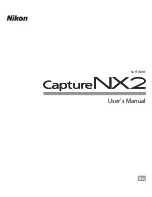
Introduction to DDL
Data Definition Language (DDL) Reference Manual — 426798-002
1 -3
Using DDL Definitions
•
Create a data dictionary
A DDL dictionary is a DDL database that contains the objects defined in a schema.
When you run DDL to compile the source schema, you can direct DDL to store the
object definitions from the schema in an open dictionary.
•
Create a database
You can direct DDL to generate FUP commands from the record definitions in a
source schema or dictionary and to write these commands to an EDIT file. You can
edit the commands, if needed, and then submit the command file to FUP to create
your database files.
You can use the SQL Convert utility, described in the NonStop™ SQL/MP
Reference Manual, to generate SQLCI commands that convert an Enscribe file
(described in a DDL dictionary) to a table or index (described in an SQL catalog).
The SQL Convert utility creates an EDIT file that contains SQLCI commands. To
submit the commands to SQLCI, specify the EDIT file name in an SQLCI OBEY
command.
•
Generate source code for programming languages
You can direct DDL to translate the DDL object definitions from a source schema
or dictionary into C, COBOL, FORTRAN, Pascal, pTAL, TACL, or TAL source code
and to write the code to an EDIT file. You can edit this code, if needed, and then
add it to your application program.
•
Create messages
You can use DDL to define messages for interprocess communication and store
the message definitions in a DDL dictionary. Having stored the messages, you can
translate them into the appropriate programming language or languages.
If you use SPI messages for interprocess communication in a DSM environment,
you define the SPI message tokens with DDL and translate them into C, COBOL,
Pascal, pTAL, TACL, or TAL source code. SPI uses the token definitions to build
the SPI messages.
•
Maintain a dictionary
You can use DDL commands and statements to add new object definitions to a
dictionary, to delete or change existing definitions, and to build a source schema
from the dictionary and write the schema to an EDIT file. You can generate an
entire backup schema, or you can write only selected sections of the dictionary to a
DDL source schema file.
•
Examine a dictionary
You can request a schema report that describes each object definition in a schema
or dictionary, or that describes selected definitions. You can also use a set of
Enform queries provided by HP to produce more complex reports on all the objects
in a dictionary, their structure, how they are linked, which objects are referenced by
















































